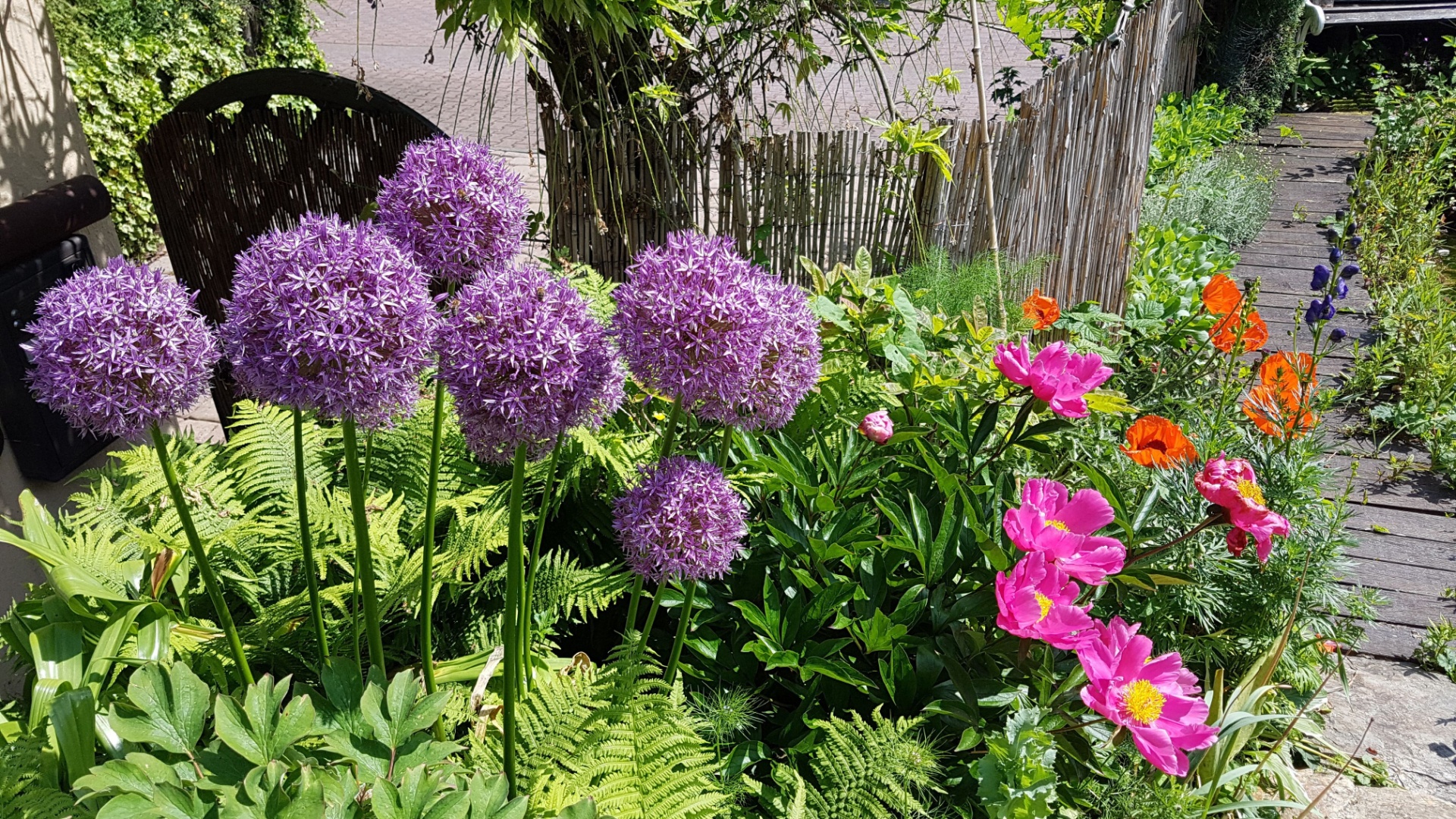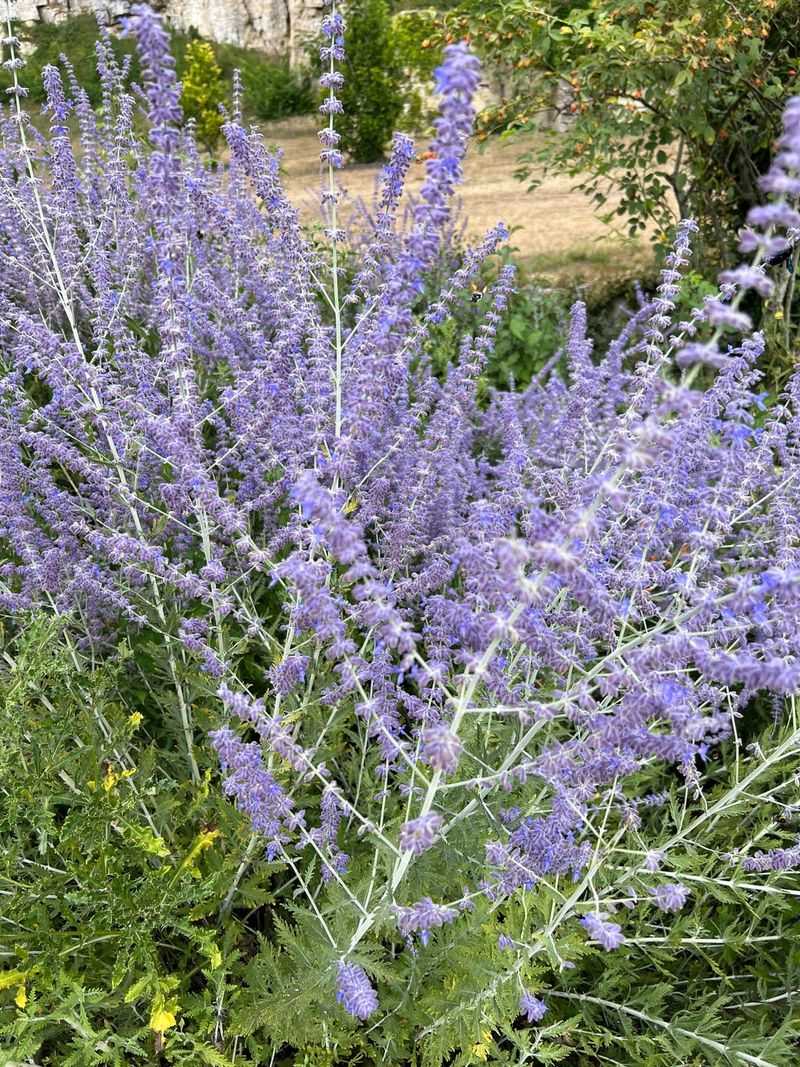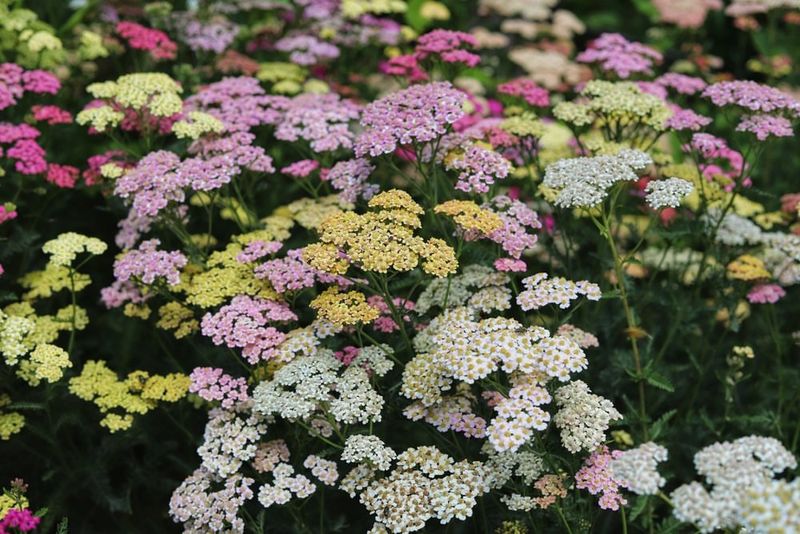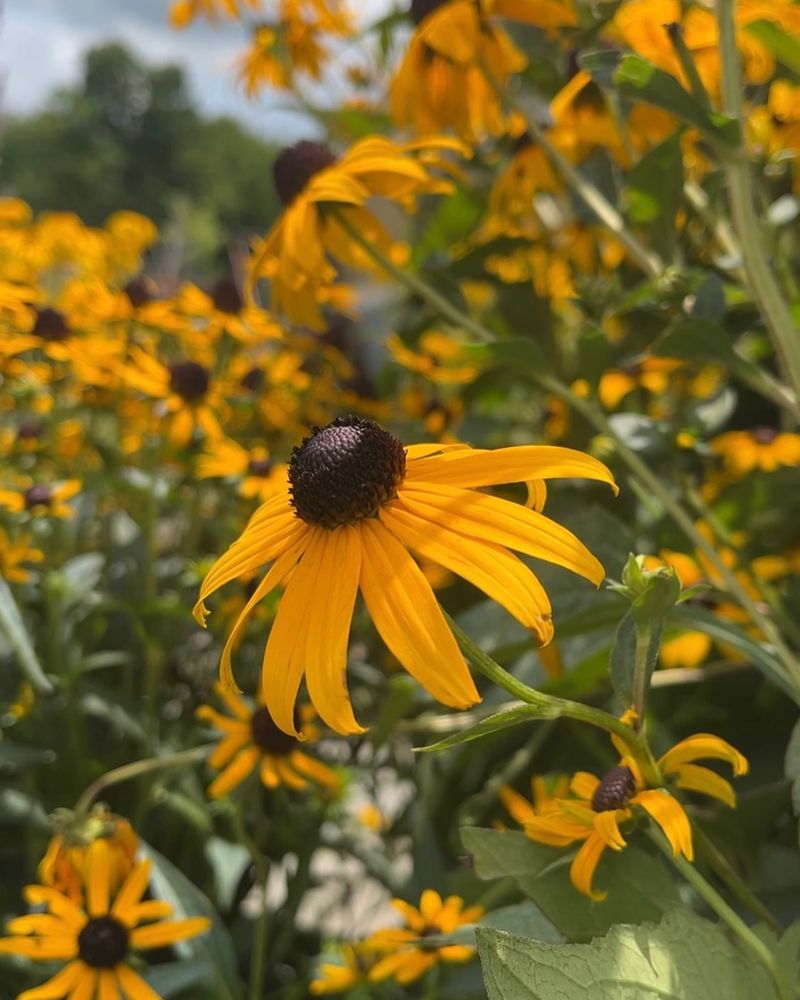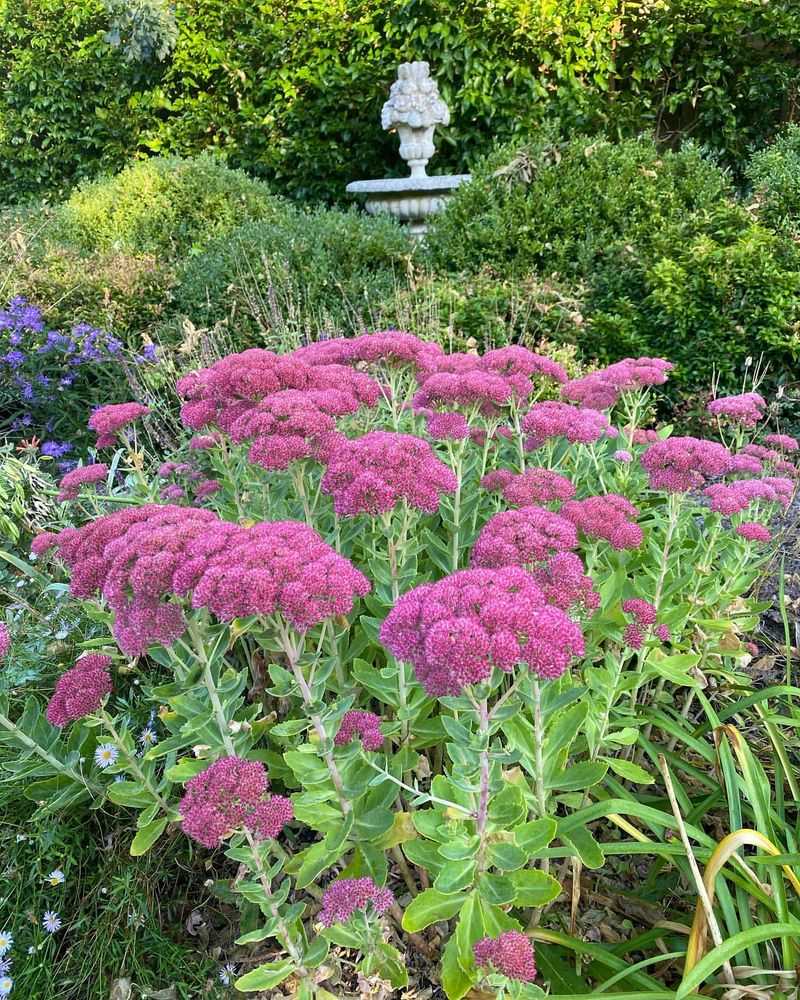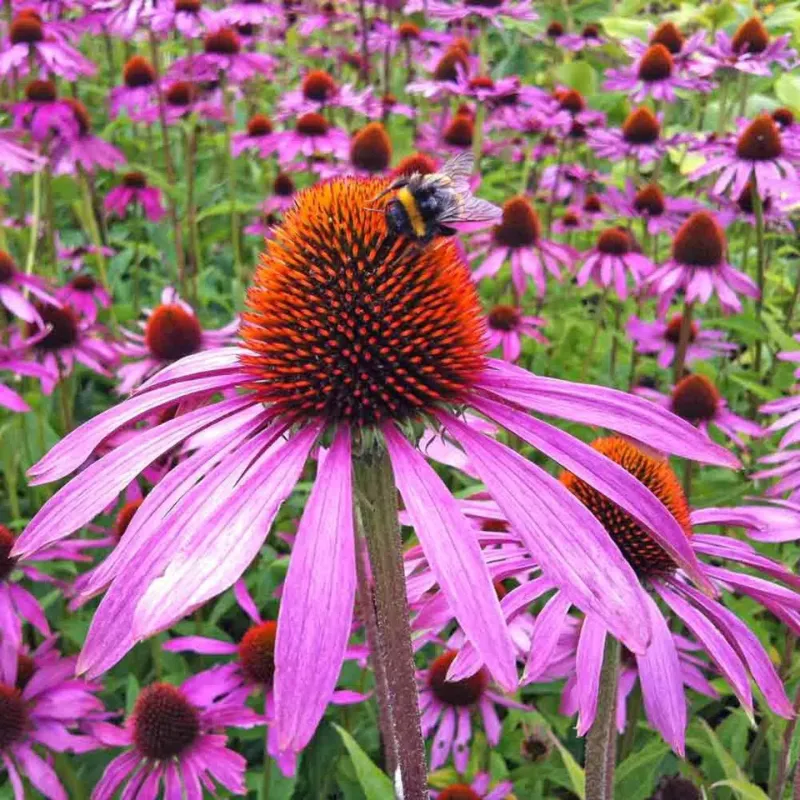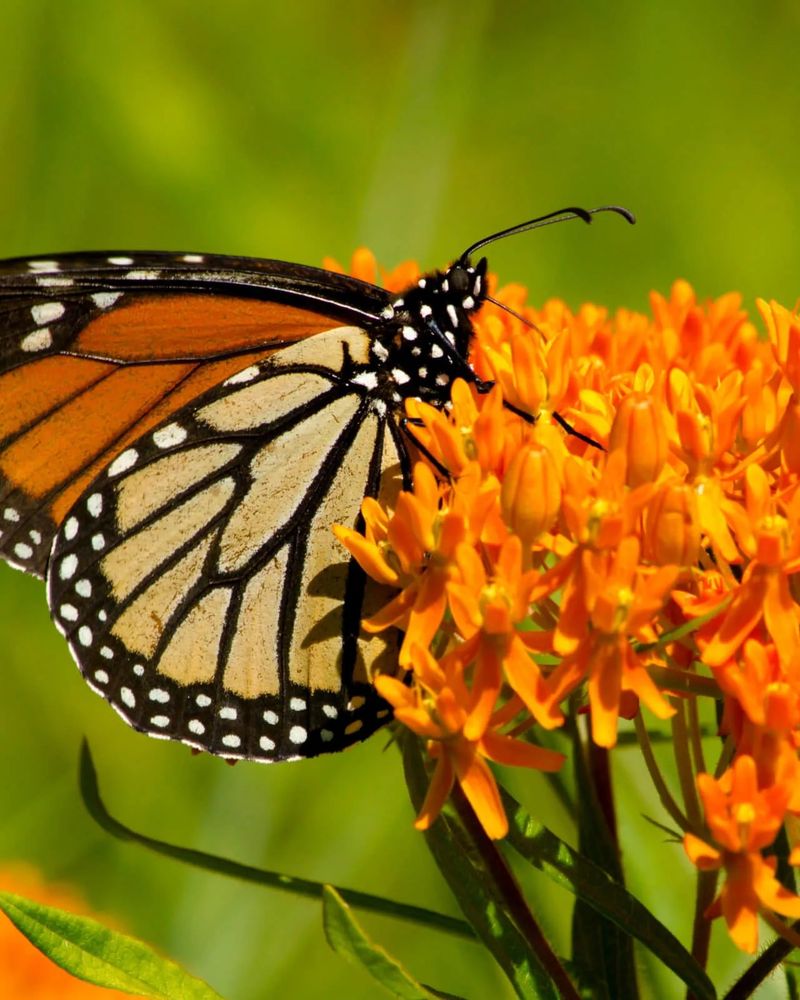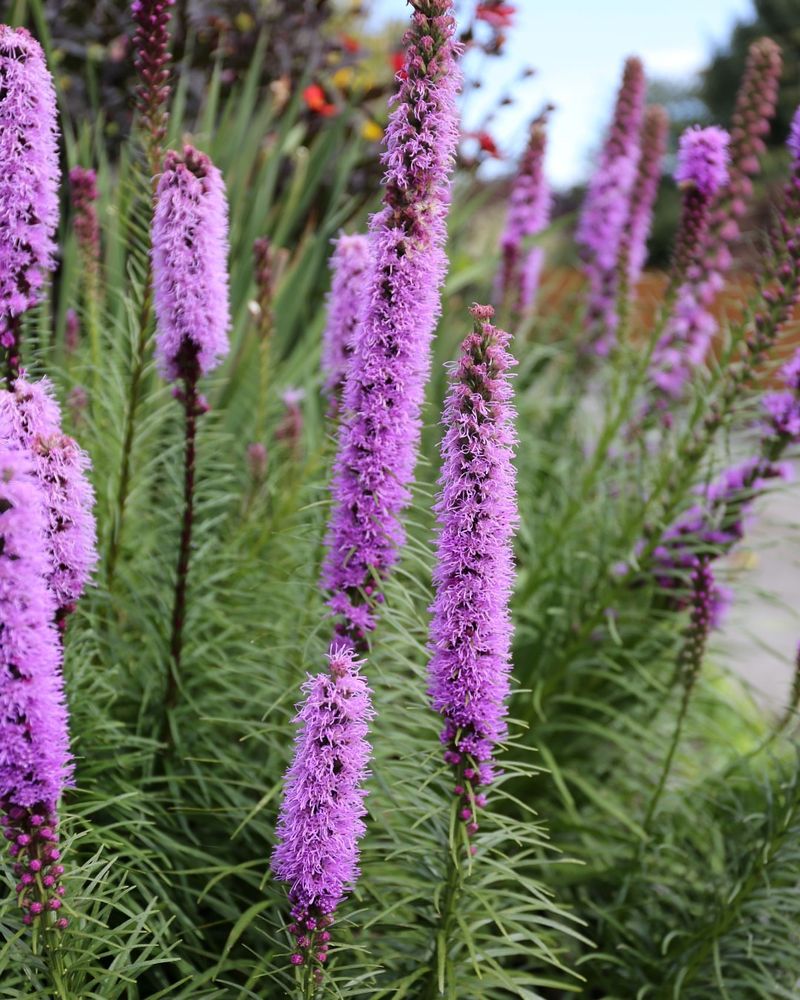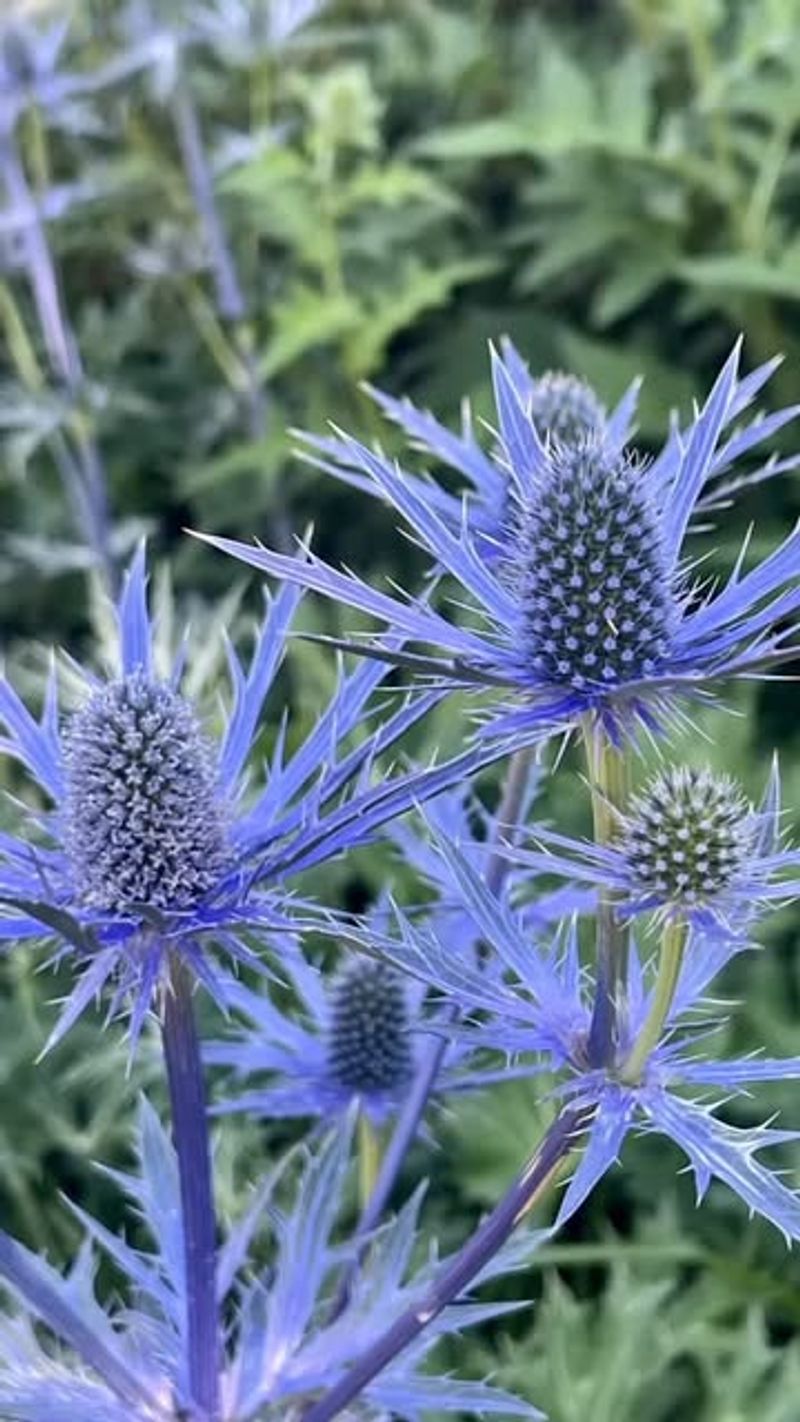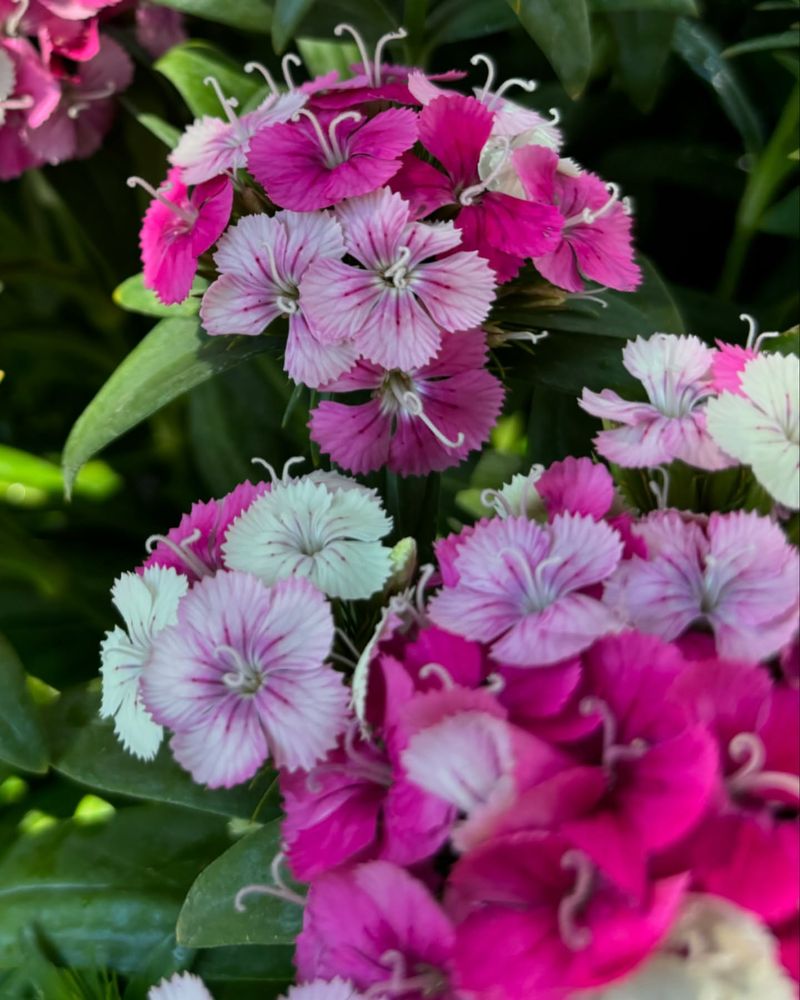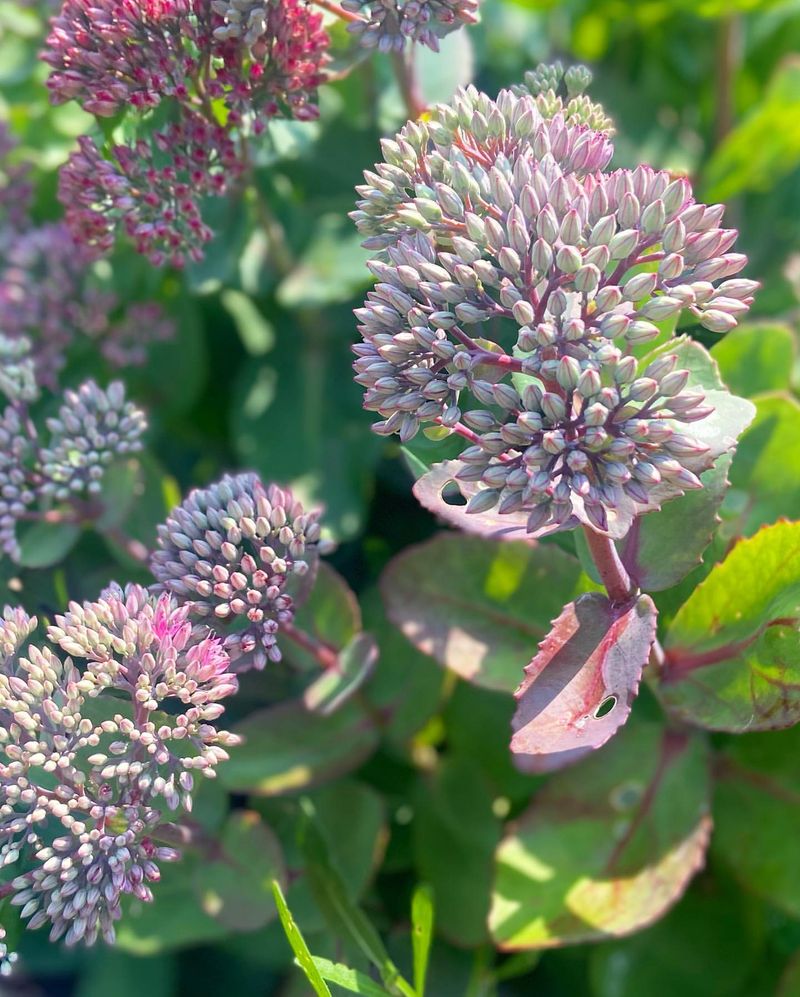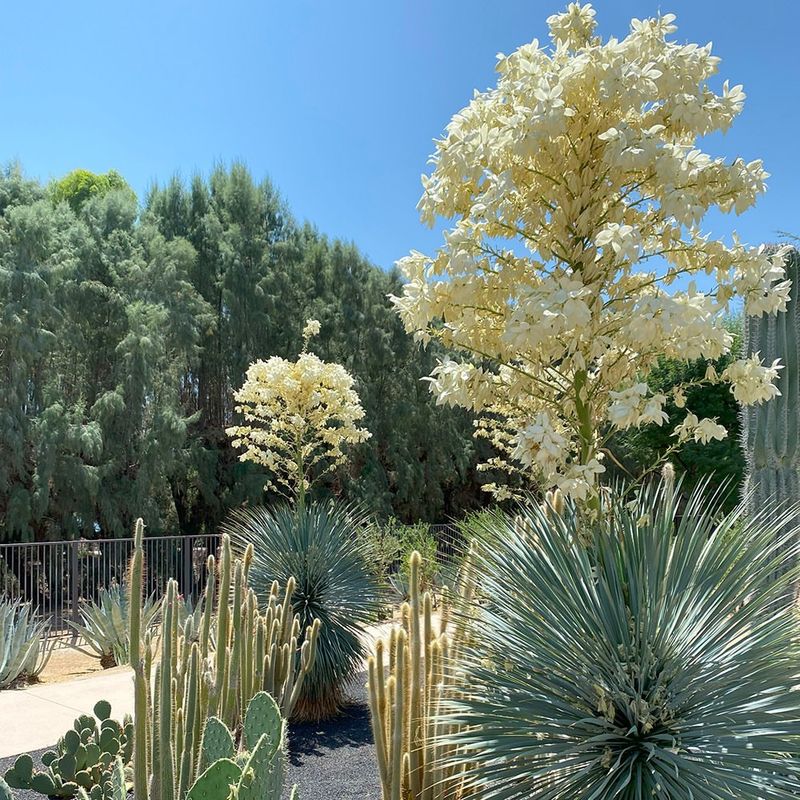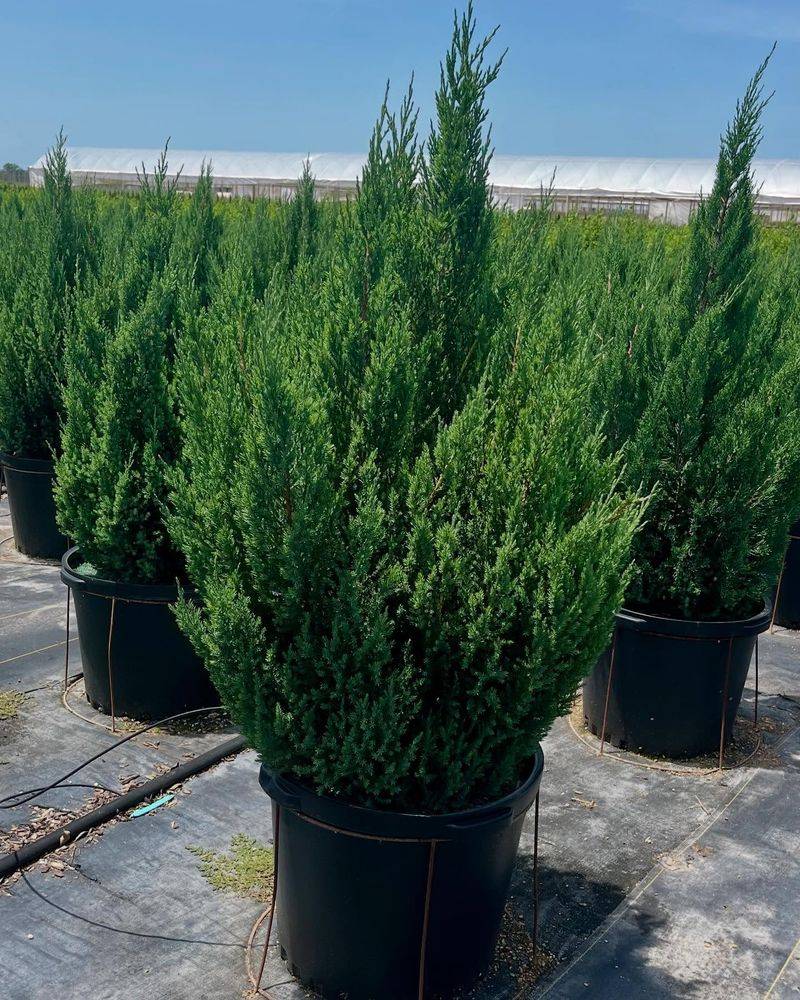Not all plants need babying to survive August in Boston. Some are thriving right now without a single drop from the hose. These drought-tough flowers, grasses, and ground covers are handling the heat and dry spells like pros—keeping yards colorful and stress-free.
If you’re ready to save time, water, and effort, these are the plants proving they can handle it all.
1. Russian Sage
Silver-gray foliage creates a stunning backdrop in any Boston garden. Russian sage stands tall with vibrant purple-blue flower spikes that attract butterflies and beneficial pollinators to your yard.
Once established, this perennial laughs in the face of drought conditions. Its aromatic leaves even repel deer and rabbits, making it truly low-maintenance from every angle.
2. Yarrow
Flat-topped flower clusters in shades of yellow, pink, red, or white make yarrow a showstopper in any Boston landscape. Native to North America, this hardy perennial thrives in poor soil conditions where other plants struggle.
Yarrow’s feathery foliage adds texture to garden beds while requiring virtually no supplemental water. Ancient healers valued this plant for wound healing, earning it the nickname “soldier’s woundwort.”
3. Black-Eyed Susan
Golden petals surround dark brown centers on these cheerful native flowers that brighten any Boston yard. Black-eyed Susans establish deep root systems that help them access water far below the soil surface.
Bees and butterflies flock to these blooms throughout summer and into fall. Leave the seed heads standing after flowering ends and you’ll attract goldfinches and other birds seeking a nutritious meal during colder months.
4. Sedum ‘Autumn Joy’
Succulent leaves store water like natural reservoirs, allowing this plant to sail through dry periods effortlessly. ‘Autumn Joy’ sedum starts with broccoli-like flower heads in summer that transform to deep pink and eventually copper-red by fall.
Butterflies can’t resist the nectar-rich blooms. The thick, fleshy foliage looks attractive all season long, providing structure and interest even when not flowering.
5. Lavender
Fragrant purple spikes sway gracefully in Boston’s summer breeze, creating a Mediterranean vibe in your landscape. Lavender’s silvery foliage and compact growth habit make it perfect for borders or standalone specimen plants.
Native to dry, rocky regions, lavender actually performs better with minimal watering. Harvest the aromatic stems for sachets or culinary use, bringing the garden’s bounty indoors long after summer ends.
6. Coneflower (Echinacea)
Daisy-like blooms with distinctive raised centers give coneflowers their name and unmistakable silhouette. These native perennials produce flowers in shades ranging from classic purple to white, yellow, orange, and even green.
Long taproots help coneflowers withstand drought conditions common in late Boston summers. Medicinal properties have made echinacea a favorite in herbal remedies for centuries, particularly for immune support during cold and flu season.
7. Butterfly Weed
Brilliant orange flowers create a beacon for monarchs and other butterflies in Boston gardens. Part of the milkweed family, butterfly weed serves as a crucial host plant for monarch caterpillars while requiring minimal care from gardeners.
Deep taproots make this native perennial exceptionally drought-tolerant once established. Unlike common milkweed, butterfly weed stays well-behaved in garden settings without spreading aggressively through underground runners.
8. Catmint
Clouds of lavender-blue flowers hover above aromatic gray-green foliage, creating a soft, billowing effect in garden borders. Catmint begins blooming in late spring and continues well into fall if lightly trimmed after the first flush.
Drought tolerance makes this perennial perfect for Boston’s unpredictable summer rainfall patterns. Despite its name, catmint won’t drive your feline friends crazy like true catnip, though some cats may still show mild interest in the fragrant foliage.
9. Lamb’s Ears
Velvety silver leaves feel as soft as their namesake, creating a tactile experience children especially love. This ground-covering perennial spreads slowly to form a beautiful carpet of fuzzy foliage that suppresses weeds naturally.
Tall purple flower spikes appear in summer, though many gardeners remove them to focus on the distinctive foliage. Extremely drought-resistant, lamb’s ears actually prefer dry conditions and may rot if soil stays too wet.
10. Gayfeather (Liatris)
Vertical purple flower spikes create dramatic height and texture in Boston gardens. Unlike most flowers that bloom from the bottom up, gayfeather’s unique blooms open from the top down, creating weeks of evolving interest.
Native to North American prairies, liatris developed extraordinary drought tolerance through evolution. Butterflies, bees, and hummingbirds flock to the nectar-rich blooms throughout summer, making this plant as beneficial to wildlife as it is beautiful.
11. Sea Holly
Spiky blue flowers surrounded by silvery bracts create an almost otherworldly appearance in the garden. Sea holly’s steely blue coloration stands out dramatically against green foliage plants and complements virtually any garden color scheme.
True to its name, this perennial evolved near coastlines where sandy soil drains quickly. The deeply penetrating taproot allows sea holly to access moisture far below the surface, making supplemental watering unnecessary even during Boston’s driest weeks.
12. Ornamental Onion (Allium)
Globe-shaped flower heads perched atop tall stems create dramatic architectural interest that persists long after blooming. Alliums range from tiny grape-sized clusters to massive softball-sized spheres depending on variety.
Bulbs store water efficiently, allowing these plants to thrive with minimal irrigation. Deer and rabbits avoid alliums due to their oniony scent, making them perfect for Boston gardens plagued by hungry wildlife.
13. Dianthus (Pinks)
Spicy clove-scented flowers in shades of pink, red, and white bring old-fashioned charm to modern Boston gardens. Many varieties feature distinctive fringed petals that look as if trimmed with pinking shears, explaining their common name.
Gray-blue foliage forms neat mounds that remain attractive even when not in bloom. Mediterranean origins give dianthus exceptional heat and drought tolerance, allowing them to flourish in Boston’s summer conditions without supplemental watering.
14. Stonecrop
Fleshy succulent leaves in shades of green, blue, red, and purple create colorful carpets in Boston gardens. Low-growing varieties make excellent ground covers, while taller types provide vertical interest with their late-summer blooms.
Water-storing leaves allow stonecrop to survive extended dry periods effortlessly. Originally found growing on rocky outcroppings and cliff faces, these tough plants actually perform better in poor soil with minimal care than in rich, heavily watered conditions.
15. Yucca
Sword-like evergreen leaves bring dramatic architectural structure to Boston landscapes year-round. Tall flower stalks emerge in summer, covered with creamy white bell-shaped blooms that illuminate the garden at dusk.
Extremely drought-tolerant, yuccas store water in their thick leaves and robust root systems. Ancient peoples used various yucca species for food, fiber, and soap, making this plant as practical as it is beautiful.
16. Juniper
Evergreen foliage in shades ranging from bright green to steely blue provides year-round structure in Boston yards. Junipers come in various forms—from ground-hugging spreaders to upright columns—making them versatile landscape elements.
Incredibly drought-resistant once established, junipers evolved in harsh conditions worldwide. Blue-black berries (actually modified cones) appear on female plants, providing winter food for birds and essential flavoring for gin production.

